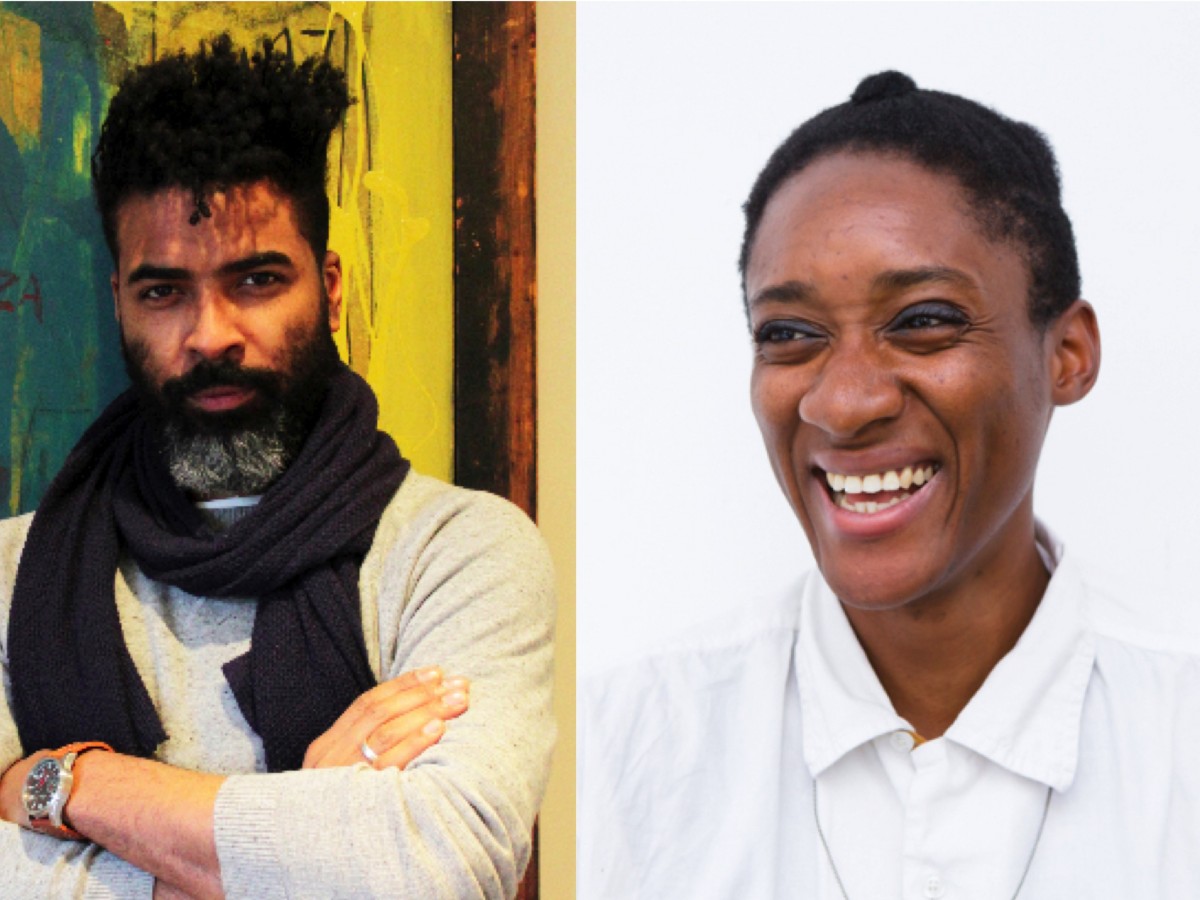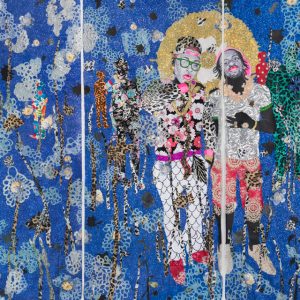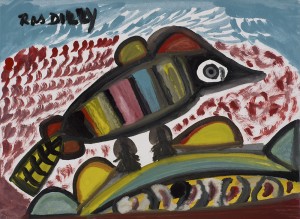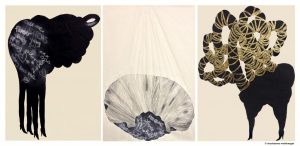
Jamaican Pulse opens in the United Kingdom at the RWA Bristol on June 25 and runs until September 11. The exhibition, conceptualised and co – curated by artists Kat Anderson and Graeme Mortimer Evelyn, is a first. At a time when Jamaican art is receiving growing international acclaim, Jamaican Pulse will celebrate the extraordinary diversity and legacy of Jamaican art, presenting contemporary artwork alongside key works from Jamaican art history.
The exhibited work will span multiple disciplines including painting, sculpture, photography, textiles and moving image, and will be supported by twentieth century artwork from a number of public and private collections, including the Jamaican High Commission, London, and The National Gallery of Jamaica, Kingston.
Jamaican Pulse and the associated events happening in the wider community, ranging from opera to theatre to dance, has something for everyone. Well known contemporary Jamaican artists like Ebony G Patterson, Laura Facey, Storm Saulter, Camille Chedda, and many more will be exhibiting. Works from Jamaican Masters like Edna Manley, Everald Brown, Ras Dizzy, Albert Huie, Karl Parboosingh, Kapo, David Pottinger, George Rodney and more will also be on display.

Meet the Visionaries behind Jamaican Pulse
Curation is a vital but often overlooked role in the art world. These art professionals are visual and spatial storytellers, charged with selecting a collection of artworks for a venue. They use their skills to selecting artwork for an exhibition and they communicate a narrative to the audience. Go Global Art recently caught up with Kat Anderson and Graeme Evelyn in London to discuss their role as co-curators of “Jamaican Pulse: Art and Politics from Jamaica and the Diaspora”.
GGA: How did you change from being “artists” to being “curators” and what is the main difference between those roles?
KA: I studied Fine Art at university and had a few artist commissions, but in recent years I have been working primarily as a Creative Producer and Curator. I’ve worked at the Bristol City Museum, at the Art Galleries in Bristol as a Junior Curator and as the Gallery Manager of Centrespace. In these roles, I was involved in curating shows, but Jamaican Pulse is the first major exhibition that I have curated.
GME: I am both an artist and studio director, and I have curated and co-curated on many occasions on a much smaller scale within group art exhibitions, open studio events and festivals. Like Kat, Jamaican Pulse represents the first major exhibition that I have curated. I would say that the major difference between being an artist and being a curator is that an artist creates artwork from an individual and unique perspective and interest – whereas a curator selects works from the artist from which to create a space and conversational theme, that hopefully inspires dialogue between the audience and the artist’s artwork.
GGA: What is the most memorable project that you have worked on?
KA: One project that I am extremely proud to have produced was called Down at the Bamboo Club. It was an ‘Abolition 200’ project for Picture This Moving Image in Bristol. Through the commission of artist films, public workshops and exhibitions the project examined Bristol’s involvement in the Slave Trade and its legacy to the city and the psychological impact on descendants of enslaved Africans. I worked with some really talented artists and the project generated some interesting intersections between art and the local community. Not only that, we got to work in some important historic sites in my hometown that I was not aware of, such as the John Wesley Chapel.
GME: For me it would be the Afrika Eye International Film Festival of 2012 at the Watershed Bristol. I selected Andy Mundy – Castle’s documentary The Fade, which chronicled the lives of four barbers in Accra/Ghana, London, New York and Kingston Jamaica. I also included Life and Debt – the seminal 2001 documentary film directed by Stephanie Black (inspired by the essay “A Small Place” by Jamaica Kincaid. Life and Debt examined the economic and social situation in Jamaica, and specifically the impact of the International Monetary Fund and World Bank Globalization policies. Lastly I selected Jamaican filmmaker Storm Saulter’s groundbreaking contemporary Jamaican cinematic feature, Better Mus’ Come, which details the deadly impact of partisan Jamaican Politics during the Seaga/Manley era.
GGA: Kat, you live in Berlin and Graeme, you’re based in London – how did you both come up with the concept and decide to work together on this show?
KA: Well we know each other from Bristol – I grew up there and Graeme lived there for a number of years. I believe it was around the time that I was doing The Bamboo Club project when Graeme and I met. Graeme actually led a workshop for one of the projects. I started visiting him in his studio and we just began talking about art in Bristol, things we’d seen, things we’d not seen, discussing work we had an affinity with…
GME: Yes, Kat and I have been friends for some time now and have followed each other’s journey as second-generation Jamaicans in the British art world. We often hung out at my studio and discussed the under-representation of contemporary Caribbean artists in the UK and decided to take some action to rectify this missed opportunity. Jamaican Pulse is a timely intervention that hopefully can create an awareness of and interest in the important voice of contemporary Jamaican and Diaspora art in the 21st century.
GGA: You mentioned that you are both second-generation Jamaicans; do you think that your Jamaican heritage made a difference?
GME: It certainly helped us to come up with the themes of the exhibition, as we were able to draw on direct experience from our parental and family heritage. This impacted the questions we posed to the artwork and to the artists themselves. Without familiarity with Jamaican culture, history and language, I believe it would have been very difficult to understand the subtleties of the important messages these artists convey.
KA: This exhibition comes from a very personal place and our heritage has very much been the driving force. As a second-generation Jamaican who has only ever been to Jamaica once before this project, the idea of seeking out work that I have a conceptual and cultural affinity with, but which also offers up very different geographic and life perspectives, was a real objective for me.

GGA: How did you choose the venue for the show?
GME: When we started to devise this exhibition, Kat and I chose The Royal West of England Academy (RWA) as these galleries are arguably the most stunning large gallery spaces in the South West.
KA: There was also a bit of a challenge. We wanted to go to the most imposing art institution and see how far we could get with a proposal to show Jamaican Contemporary visual art. We could think of nowhere more fitting of that description than the RWA, which is the oldest gallery in the city. It felt kind of austere, ‘private’ and quite frankly white! It was also conservative in the exhibitions it had hosted, which made us all the more keen to infiltrate it with this exhibition in particular. We were interested in how we would be received and whether our concept would be accepted at all. Interestingly, it took four years to be approved. By that time, I’d done a Master of Arts degree and we had both moved to London. I was actually getting ready to relocate to Germany, when I received a call from Graeme saying they wanted us to do the show!
GGA: How did you select the artwork for the show and were there any specific things that you were looking for?
GME: The selection of the art for this exhibition began as an exploration of the contemporary artists that are currently working in and outside of Jamaica. We were very keen to promote emerging artists, rather than relying on the work of ‘established’ artists as the sole voice of contemporary art on the island. Rather than stating a theme to which these artists’ had to respond, it became a process of learning and constantly reassessing as curators and second-generation Jamaicans, ‘What are these artist interested in?’ ‘What does it mean to be Jamaican in the 21st century?’ Art and Politics became the Jamaican Pulse theme simply because we found that the artists wanted to contribute to their nation’s ongoing cultural evolution as social commentators and agitators – rather than to just ‘make art for arts sake’. There is a distinction between making art created from a position of privilege, and creating art as an agent of change.

GGA: How important was it to include artists from the Jamaican Diaspora?
GME: It was of vital importance. The Jamaican Diaspora art community is very large, proactive and extensive. What we hope this exhibition produces is a renewed interest from institutional spaces and art collectors around the world in this burgeoning new interest in contemporary Caribbean voices based in the UK and beyond.
KA: I would say that the show was fairly evenly split between resident Jamaican and Jamaican Diaspora artists. What was great about this project was the opportunity to see and learn about the Jamaican Diaspora artists in North America.
GGA: Did you commission any works especially for this show?
KA: We commissioned a new performance piece by Lawrence Graham Brown, which will be performed at the opening weekend at the Arnolfini, Bristol. Jodie Lyn-Kee-Chow will be restaging two performances called “Crop Killa” and “Gypsies’ Picnic: The Veins of Oya was Always Here” at different times and locations over the opening weekend also.
GME: We also created three artist residencies, which will be in process during the show’s run. The Bluecoat in Liverpool is working in collaboration with New Local Space in Jamaica. Two Kingston-based artists Leasho Johnson and Di-Andre C. Davis will be involved in that. Paint Jamaica’s Matthew McCarthy will also be doing a residency at Easton Community Centre where he will work with a group of young people to develop a series of permanent murals. Kayle Brandon will do a drawing residency in and around St.Paul’s – an important area of African-Caribbean heritage.

GGA: What do you see as your mission as curators of this exhibition?
KA: Jamaican art is not just one thing; it has many forms, many themes. I suppose a large part of the mission was simply to showcase contemporary Jamaican Art, as a show like this and on this scale hasn’t happened for a decade or so in the UK. We want the audience to gain a sense of the proliferation of diverse voices and talent in this collective of contemporary artists. I also want the audience to walk away from the show feeling like they have seen their own lives reflected in some way and that they can personally identify with some of the themes that these artists are concerned with. We are all political beings; we are affected by politics – and the way geopolitics is heading, our intersections become more frequent and proximity draws us even nearer.
GME: As curators we have a responsibility to the artists, their artwork and space for which the work is shown. In this case, we realize that an exhibition of this importance must have positive-value creative legacies for both the artists and for Jamaican art in the UK. We also hope to spark a renewed interest in Jamaican art, which will be sustained into the foreseeable future.
GGA: From everything that I have heard, I am sure that the exhibition is going to be a success. Once the show is over, what’s the next move for you both?
GME: I am very much a full-time working artist and musician. So apart from an immediate and much needed vacation to unplug and unwind (from this very intense period of curatorial activity!) my next focus will be to continue to develop my own body of work exploring the relationship between visual arts, music (jazz specifically) and new technologies.
KA: I’m extremely proud to be one of the people to bringing this exhibition to my hometown and I am excited about introducing these artist’ work to UK audiences. Aside from Jamaican Pulse, I have several other art projects that I am starting to develop both in the UK and Germany, looking at black mental health and some of the hidden stories in Bristol’s African Caribbean community. And yes… a holiday!
List of Artists
CONTEMPORARY ARTISTS
Gerard Hanson UK / JAMAICA
Barka UK / JAMAICA
Hurvin Anderson UK / JAMAICA
Barbara Walker UK / JAMAICA
Graeme Mortimer Evelyn UK / JAMAICA
NT UK / JAMAICA
Laura Facey JAMAICA
Andrea Chung USA / JAMAICA
Camille Chedda JAMAICA
Christopher Irons JAMAICA
Deborah Carroll Anzinger JAMAICA
Di-Andre Davis JAMAICA
Ebony G Patterson JAMAICA
Jayson Keeling USA / JAMAICA
Jodie Lyn-Kee-Chow USA / JAMAICA
Kimani Beckford JAMAICA
Lawrence Graham Brown USA / JAMAICA
Leasho Johnson JAMAICA
Oneika Russell JAMAICA
Paul Anthony Smith USA / JAMAICA
Shoshanna Weinberger USA / JAMAICA
Storm Saulter JAMAICA
Matthew McCarthy JAMAICA
‘REFERENCE ROOM’ ARTISTS
Edna Manley
Elijah
Errol McKenzie
Evadney Cruickshank
Everald Brown
Kingsley Thomas
Leonard Daley
Ras Dizzy
Albert Huie
Kapo (Mallica Reynolds)
Carl Abrahams
Vernal Reuben
Trevor Burrowes
George Rodney
David Miller Jnr
Gaston Tabois
Karl Parboosingh
Omari Ra
Osmond Watson
David Pottinger
Allan ‘Zion’ Johnson
About the Author:
Andrea Dempster-Chung is an engineer and serial entrepreneur. She is the founder of Go Global Art (www.goglobalart.com) – an online platform where people purchase art directly from artists who live in different countries around the world. She has a keen interest in projects that boost the creative economy and benefit artists.







